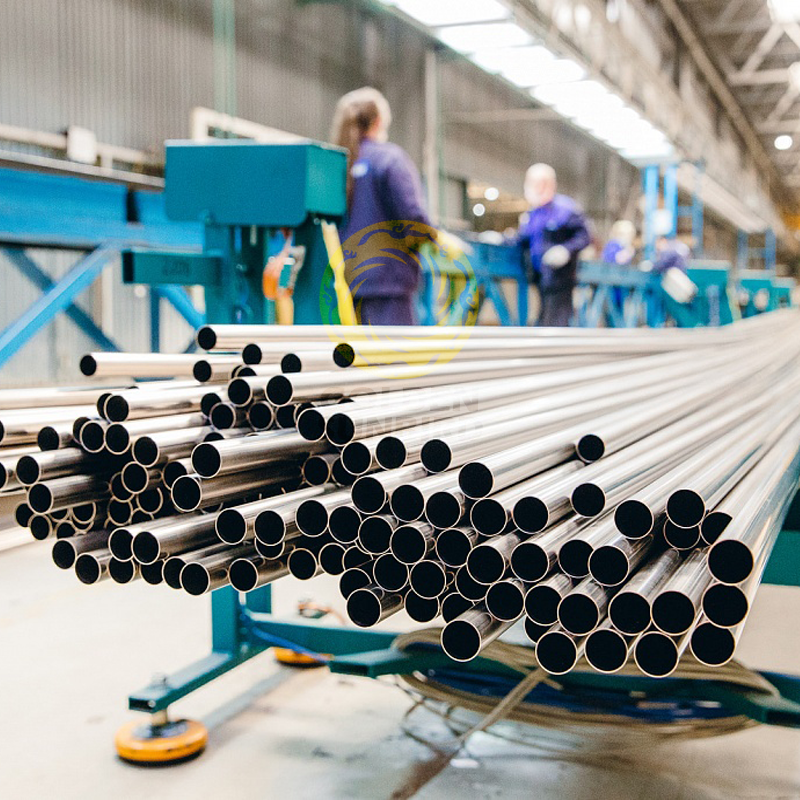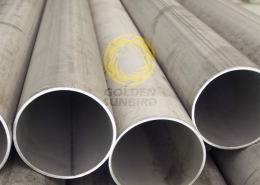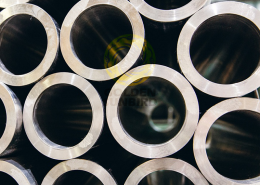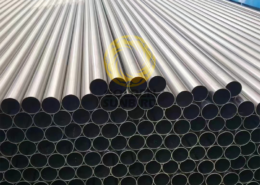ASTM B668 Seamless UNS N08028 Alloy Pipe and Tube
- Grade: UNS N08028 (Alloy 28, Sanicro 28)
- Outside Diameter (OD): 6.35-152.4mm
- Wall Thickness (WT): 1.65-8.56mm
Features
ASTM B668 Seamless UNS N08028 Alloy Pipe and Tube
Chemical Composition (wt.%)
| Element | Composition % |
|---|---|
| Carbon (max) | 0.030 |
| Silicon (max) | 1.0 |
| Manganese (max) | 2.50 |
| Phosphorus (max) | 0.030 |
| Sulfur (max) | 0.030 |
| Chromium | 26.0–28.0 |
| Nickel | 30.0–34.0 |
| Molybdenum | 3.0–4.0 |
| Copper | 0.6–1.4 |
| Iron | Remainder |
Tensile Requirements
| Tensile Strength (min) | Yield Strength (0.2 % Offset min) | Elongation in 2 in. or 4D (min) |
| 73 ksi (500 MPa) | 31 ksi (214 MPa) | 40% |
Technical Specifications
| Specification | Value |
| Standard | ASTM B668 Iron-Nickel-Chromium-Molybdenum Alloy Seamless Pipe and Tube |
| Grade | UNS N08028 (EN 1.4563, X1NiCrMoCuN31-27-4, Alloy 28, Sanicro 28), UNS N08029 |
| Manufacturing Process | Cold-finished or hot-finished |
| Seam Type | Seamless |
| Welded Pipe SPS Diameters | Outside Diameter (OD) Range: 6.4-152.4mm, Wall Thickness (WT) Range: 2.11-11.5mm |
| Length | 6000-12000mm |
| Delivery Condition | Solution-annealed |
| Inspection Certificate | EN 10204 Type 3.1 (Mill Test Certificate), EN 10204 Type 3.2 (Witness Testing or 3rd Party Inspection) |
| Test | Chemical analysis, Tensile test, Flattening test, Expansion test, Hydrostatic test, Nondestructive testing (NDT), Intergranular corrosion test, Metallographic examination |
Key Features
Excellent resistance to general corrosion: Performs well in oxidizing and reducing acids, including sulfuric acid, phosphoric acid, nitric acid, and organic acids.
Resistance to localized corrosion: Offers good resistance to pitting and crevice corrosion in chloride solutions.
High-temperature strength: Maintains mechanical properties at elevated temperatures.
Good weldability: Can be readily welded using appropriate techniques.
Packing
Both ends are equipped with plastic pipe caps or bevel protectors, small diameter pipes should be packaged in wooden crates, and large-diameter pipes should be wrapped in woven bags.
Application
Heat exchangers: Used for handling corrosive chemicals in various processes, including those involving sulfuric acid, phosphoric acid, and mixed acid solutions.
Process piping: Suitable for transporting corrosive fluids and gases in chemical plants and refineries.
Reactors and vessels: Components in chemical processing equipment exposed to aggressive environments.
Refinery equipment: Used for handling sour crude oil and natural gas containing hydrogen sulfide (H2S) and other corrosive components.
Offshore platforms and pipelines: Offers good resistance to seawater corrosion, making it suitable for marine applications.
Chemical processing: Components in scrubbers and piping systems for handling sulfuric acid and other corrosive by-products.
Wastewater treatment: Used for handling acidic wastewater and chemical treatment processes.
Pulp and paper industry: Equipment exposed to bleaching chemicals and other corrosive media.
Pharmaceutical and bioprocessing equipment: Provides good corrosion resistance and cleanability for handling sensitive materials.








